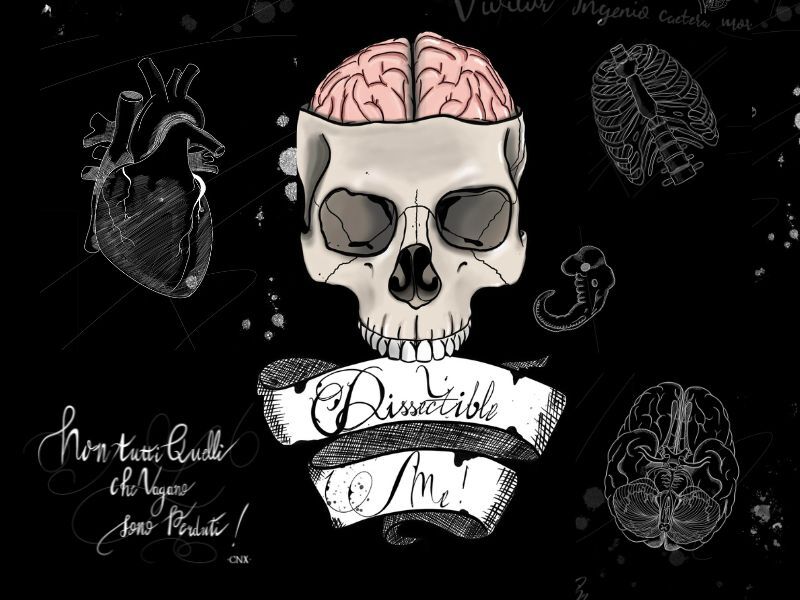Dissectible Me 5 minute anatomy
Welcome to dissectible me. Human anatomy in 5-minute chunks. In this weekly podcast, we will cover everything from introductions to bodily systems, to some very focused but fascinating nuggets of anatomical knowledge. One rule, it must be covered in 5 minutes only! Whether you are a student exploring the content for the first time, a healthcare professional refreshing your anatomy knowledge, or someone with 5 minutes to kill, this podcast is suitable for anyone with an interest in the human body. So join us as we set the timer and rattle through the captivating microcosmos that is human anatomy. Narrated by Sam Webster & Chris Summers
Episodes
16 minutes ago
Spermatic cord
16 minutes ago
16 minutes ago
The spermatic cord carries all the things the testis needs to and from the torso. What is the spermatic cord made of, what are its layers, where do these layers come from, and what are all the things inside the spermatic cord?
7 days ago
Foregut, midgut and hindgut
7 days ago
7 days ago
How can understanding the embryology of the gastrointestinal tract as foregut, midgut and hindgut help us understand the blood supply and venous drainage of the adult GI tract?
Friday Jul 04, 2025
Somatic nervous system
Friday Jul 04, 2025
Friday Jul 04, 2025
"Soma" means "of the body" so what is the somatic nervous system? How is this dividing up of the nervous system useful? I'll try to describe this neuroanatomy concept in 5 minutes.
Friday Jun 27, 2025
Ovarian and uterine artery anastomosis
Friday Jun 27, 2025
Friday Jun 27, 2025
The ovarian artery branches from the aorta and supplies blood to the ovary. The uterine artery branches from the internal iliac artery and supplies blood to the uterus. But they link, and in doing so provide a collateral circulation route between the abdominal aorta and pelvic internal iliac artery. Let's discuss.
Friday Jun 20, 2025
Trendelenburg Sign
Friday Jun 20, 2025
Friday Jun 20, 2025
What is the anatomy behind Trendelenburg gait? Why does the hip drop? Which hip drops? Which side is the weakness on? What might cause this? I'll try to describe this clearly in 5 minutes.
Friday Jun 13, 2025
Major motor nerves of the lower limb
Friday Jun 13, 2025
Friday Jun 13, 2025
A common request is for me to summarise the nerves of the lower limb and how they innervate the muscles. If we think about the parts of the lower limb (thigh, leg and foot) and their compartments we can link each nerve to each compartment and then easily remember every nerve that innervates every muscle. Well, that's the theory.
Friday Jun 06, 2025
Aortic dissection
Friday Jun 06, 2025
Friday Jun 06, 2025
An aortic dissection occurs when the innermost layer of the aorta tears and blood pushes into the walls of the aorta, separating the layers and causing some very dangerous problems. Let's talk through this process and think about the anatomy that might also be affected.
Friday May 30, 2025
Anatomical snuff box
Friday May 30, 2025
Friday May 30, 2025
The anatomical snuff box describes a clinically useful surface anatomy landmark on the back of the thumb at the wrist, outlined by a triangular set of tendons. In here we find the scaphoid bone and some other structures. I'll try to describe what you can find here on yourself.
Friday May 23, 2025
Small intestine
Friday May 23, 2025
Friday May 23, 2025
There is so much that we could talk about when looking at the anatomy of the small intestine, but if I only had 5 minutes what would I choose as the most important ideas?
Friday May 09, 2025
Axilla
Friday May 09, 2025
Friday May 09, 2025
The axilla is the armpit, and an anatomical space linking the torso with the upper limb. Let's define its borders so we better understand where it is and then we can talk briefly about the structures that we find passing through or residing in there.

Thanks for listening
Check back weekly for new episodes or take a look at our back catalogue of varying topics by clicking the 'load more' button above.
Narrated by Sam Webster & Chris Summers





